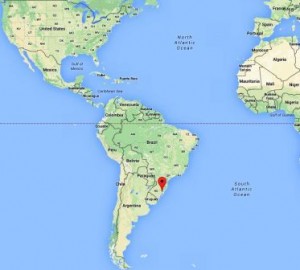Having lofty ambitions is good. After all, by striving to achieve the impossible we may actually do it. And, the rewards can be many. But, if we only have lofty ambitions and pay no heed to the myriad actions required along the way to achieving them then we’ll likely never reach our destination. Many organizations (and individuals) fall into this head-in-the-clouds trap.
Being More Grounded
You’ve heard it, maybe even said it, “You’ve got to be more grounded. Get your head out of the clouds.” People who say such things are mindful of the implementation details. They are the “execution police” among us. Whereas some minds are filled with lofty ambitions, others are consumed with getting things done. The details they fret over may appear to some to be too grounded, or “weed-level.” But completing weed-level projects is necessary for a functional organization. Whether it’s invoicing the newest customer or making payroll, updating the website, or producing and distributing the latest company news or developing a block of code, weed-level projects guided by a coherent strategy propel an organization toward its destination.
Guided by Coherent Strategy
The caveat in that last statement is “guided by a coherent strategy.” If weed level projects become the strategy unto themselves then the organization is headed for trouble. When strategy gets hijacked by a propensity toward getting things done, minutiae can begin to consume all available resources. When this happens, there is no longer capacity in the organization for healthy discourse. Nobody would ever hang a banner on the wall expressing the norm of “Guided by Minutiae” but many have felt this way in organizations large and small. This spells trouble for employee engagement and an otherwise would-be innovation culture.
Beware of Action Junkies
At the extreme, “action junkies” place demands on the organization that might be counter to the strategy already in play. The time horizon for gratification shrinks. Instead of thinking long term strategy and the benefits thereof, short-termism takes over. This can happen at all levels of the organization, shifting the focus and further demanding the attention of others. Suddenly people are pulled into “surprises” while others may be shed like an unwanted winter coat. You’ve heard this play out in organizations before; perhaps you’ve even uttered the words, “We just need….” When short term tactics become the basis of your strategy, your organization begins to drift. Persistent strategic drift will cripple an organization, no matter its size or tenure. See related articles: Don’t Let Your Organization Become a Lumpy Snowball and also Focus Focus or Hocus Pocus.
“Strategy without tactics is the slowest route to victory. Tactics without strategy is the noise before defeat.” – Sun Tzu
Sun Tzu said this well, “Strategy without tactics is the slowest route to victory. Tactics without strategy is the noise before defeat.” 2500 years later we still are dealing with the same human foibles on the battlefield, in board rooms, and in every room.
The False Choice
In the title of this article I presented you with a false choice, namely, where should strategy live, in the clouds or in the weeds? Actually, you need strategy in both places. Your strategy needs to produce strategic imperatives that communicate the overarching aims of the organization. You also need a strategy to continuously ensure that the execution level details remain hitched to strategic aims. This passes the relevance test. You should be able to walk down the strategy from the clouds to the weeds and vice versa from the weeds up to the clouds. If you cannot do this without massive tension among those involved in the discussion then more work (and conversation) is warranted. Two scenarios are likely at this point.
Scenario 1: Mapping but Questions Remain
You’ve heard of such practices and maybe have some firsthand experience mapping individual goals to department goals and objectives that in turn map to the organization’s strategic imperatives. That is great. You’ve started but related challenges to resolve include:
- Is your innovation culture able to detect changes in customer mood, needs, and desires?
- What about the changes in technology, communications, and other factor outside your organization that are certain to change?
- Does your organization embrace ideas that may come at times inconvenient? Does it matter where those news idea comes from?
- What about responsiveness to competitive changes or budding alliances in the business landscape?
- And, how will you keep score of your progress or lack thereof?
Scenario 2: Conversation Needed
You’ve not performed strategy mapping in any form. In that case, definitely more conversation is warranted. For that, I recommend you assemble a team, carve out quality time (and place), and begin a regular dialogue beginning with the questions raised in scenario 1) , but more generally how can your organization remain relevant in a constantly changing environment? One model to leverage is the Promise Delivery System, the subject of Chapter 8 in, The Experience Design Blueprint.
The model and method you use isn’t as important as you establishing a regular dialogue on strategy and execution. Once you do, you’ll more naturally know whether the weed-level project du jour is “on-strategy” or a defection thereof.
A Strategy That Lives
When enough people in the organization are executing on a coherent and communicated strategy, employee engagement will soar, an innovation culture will coalesce, and the organization’s well being will improve no matter how you’ve collectively defined that. Then you can revisit the original question about where strategy should live. Instead of answering “in the clouds” or “in the weeds” you can confidently state “our strategy lives in both places and in between. We are able to shape and shift our strategy as needed. Our strategy is alive and well. Our many stewards of strategy are on the watch and at the ready.”
about the author
Gregory Olson is a consultant, speaker, and author. He founded strategy and design firm Delightability, LLC. with the belief that if you delight customers then success will follow. He believes that we all have the potential to do better, as individuals, organizations, and entire nations.  Gregory Olson’s latest book is L’ impossipreneurs: A Hopeful Journey Through Tomorrow, a light-hearted and deadly serious book about a brighter future where we live more meaningful lives, governments invest in people and sustainable progress, and technology serves humans.
Gregory Olson’s latest book is L’ impossipreneurs: A Hopeful Journey Through Tomorrow, a light-hearted and deadly serious book about a brighter future where we live more meaningful lives, governments invest in people and sustainable progress, and technology serves humans.
Greg also authored The Experience Design Blueprint, a book about designing better experiences and then making them come true.


















 Gregory Olson founded strategy and design firm Delightability, LLC. with the belief that if you delight customers then success will follow. He believes that we all have the potential to do better, as individuals, organizations, and communities, but sometimes we need a little help. Gregory also serves as a volunteer board member for
Gregory Olson founded strategy and design firm Delightability, LLC. with the belief that if you delight customers then success will follow. He believes that we all have the potential to do better, as individuals, organizations, and communities, but sometimes we need a little help. Gregory also serves as a volunteer board member for